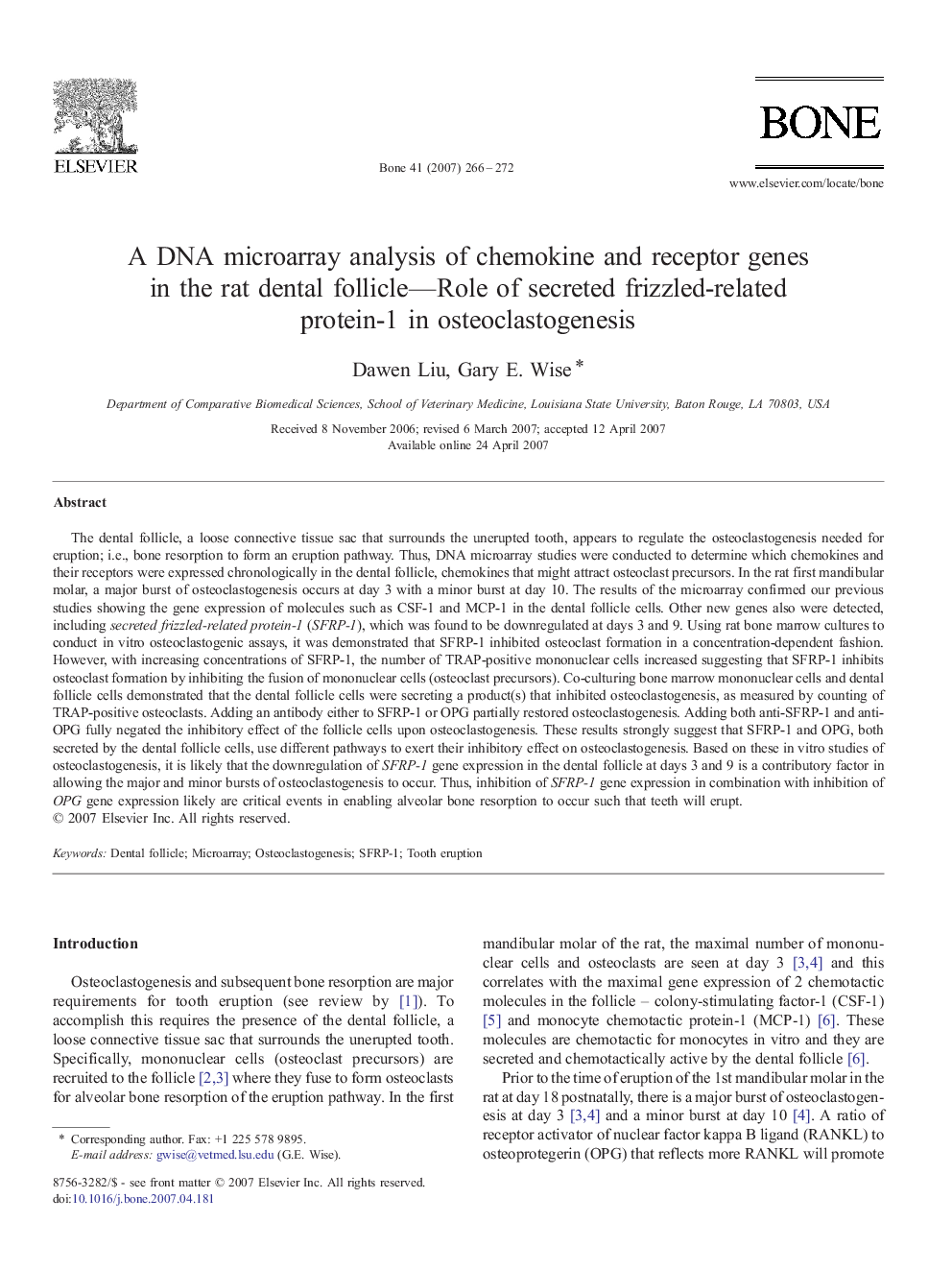| کد مقاله | کد نشریه | سال انتشار | مقاله انگلیسی | نسخه تمام متن |
|---|---|---|---|---|
| 2782726 | 1153357 | 2007 | 7 صفحه PDF | دانلود رایگان |

The dental follicle, a loose connective tissue sac that surrounds the unerupted tooth, appears to regulate the osteoclastogenesis needed for eruption; i.e., bone resorption to form an eruption pathway. Thus, DNA microarray studies were conducted to determine which chemokines and their receptors were expressed chronologically in the dental follicle, chemokines that might attract osteoclast precursors. In the rat first mandibular molar, a major burst of osteoclastogenesis occurs at day 3 with a minor burst at day 10. The results of the microarray confirmed our previous studies showing the gene expression of molecules such as CSF-1 and MCP-1 in the dental follicle cells. Other new genes also were detected, including secreted frizzled-related protein-1 (SFRP-1), which was found to be downregulated at days 3 and 9. Using rat bone marrow cultures to conduct in vitro osteoclastogenic assays, it was demonstrated that SFRP-1 inhibited osteoclast formation in a concentration-dependent fashion. However, with increasing concentrations of SFRP-1, the number of TRAP-positive mononuclear cells increased suggesting that SFRP-1 inhibits osteoclast formation by inhibiting the fusion of mononuclear cells (osteoclast precursors). Co-culturing bone marrow mononuclear cells and dental follicle cells demonstrated that the dental follicle cells were secreting a product(s) that inhibited osteoclastogenesis, as measured by counting of TRAP-positive osteoclasts. Adding an antibody either to SFRP-1 or OPG partially restored osteoclastogenesis. Adding both anti-SFRP-1 and anti-OPG fully negated the inhibitory effect of the follicle cells upon osteoclastogenesis. These results strongly suggest that SFRP-1 and OPG, both secreted by the dental follicle cells, use different pathways to exert their inhibitory effect on osteoclastogenesis. Based on these in vitro studies of osteoclastogenesis, it is likely that the downregulation of SFRP-1 gene expression in the dental follicle at days 3 and 9 is a contributory factor in allowing the major and minor bursts of osteoclastogenesis to occur. Thus, inhibition of SFRP-1 gene expression in combination with inhibition of OPG gene expression likely are critical events in enabling alveolar bone resorption to occur such that teeth will erupt.
Journal: Bone - Volume 41, Issue 2, August 2007, Pages 266–272